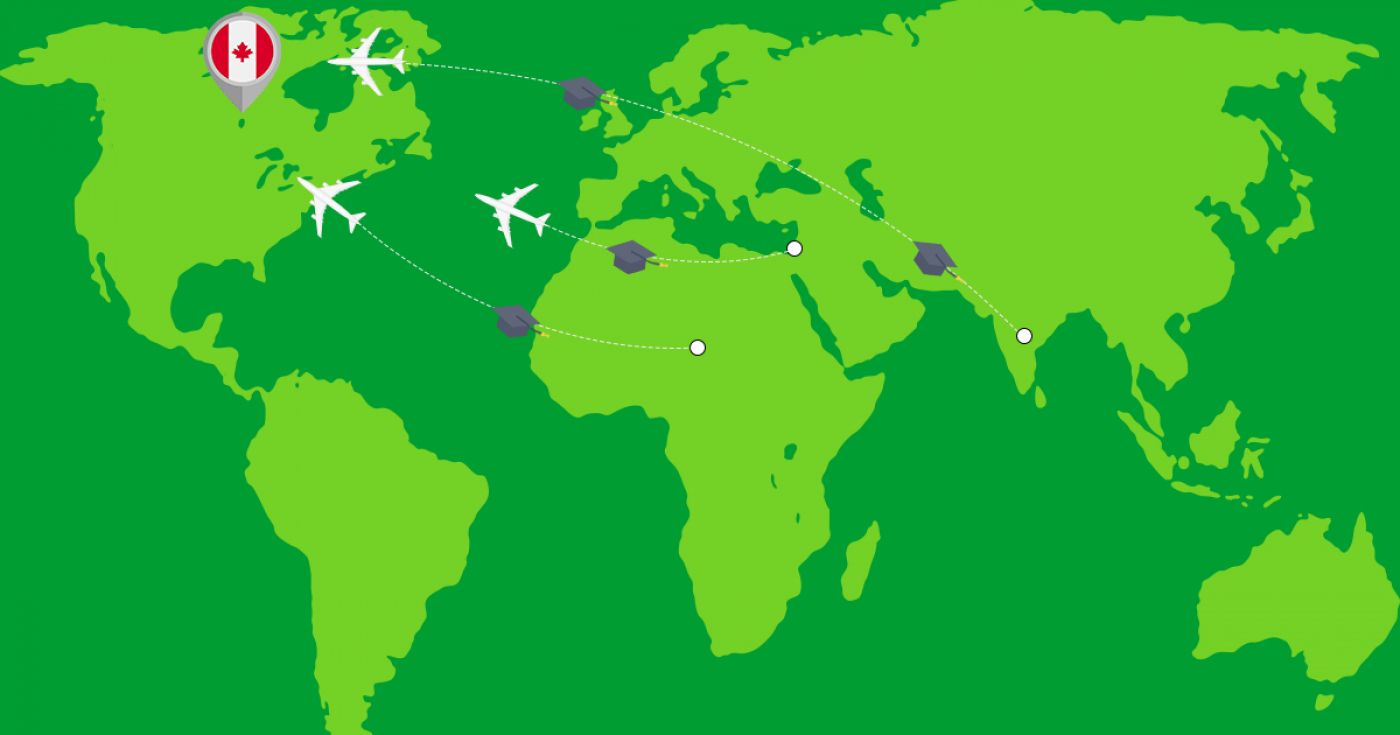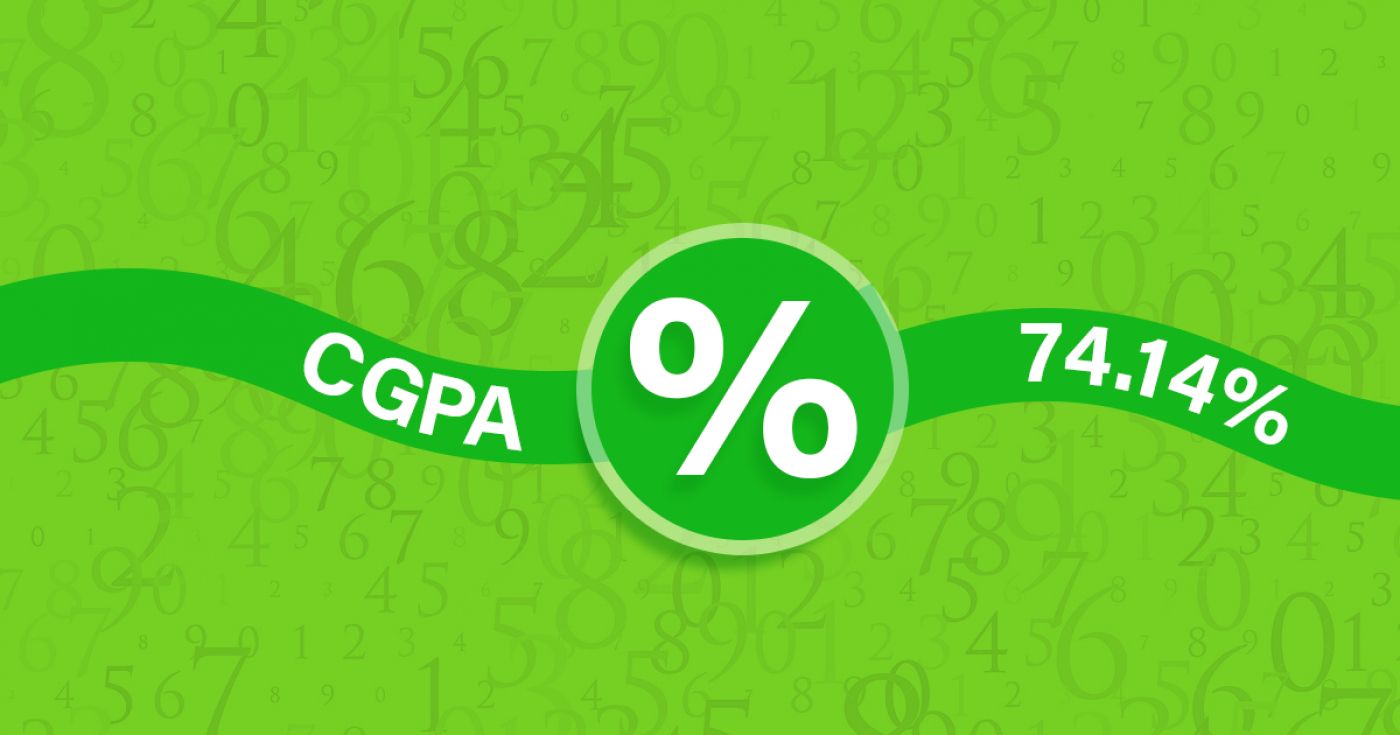Bachelor of Science in Medical Laboratory Science
at Kent State University USA
Overview
The Bachelor of Science degree in Medical Laboratory Science allows students to combine three years of study at Kent State with 12 months of professional training at an approved hospital. Medical laboratory scientists are trained to perform complex chemical, microscopic and microbiological procedures. Graduates are eligible to sit for the Board of Registry of the American Society of Clinical Pathologists Exam.
Program Learning Outcomes
Graduates of this program will be able to:
- Be certified as professional medical laboratory scientists.
- Perform assays of clinical samples in a hospital or laboratory setting.
- Demonstrate an understanding of human physiology and familiarity with human health issues.
- Interpret chemical and molecular data for clinical diagnosis.
30
Application Processing Days
Under Graduate
Program Level
Fact & Figures
Full Time On Campus
Study Mode
48
Duration
Kent State University
Location
Bachelor of Science in Medical Laboratory Science Assistant Fee
$20613
Tuition Fee
$0
Average Cost of Living
$70
Application Fee
Bachelor of Science in Medical Laboratory Science Admissions Requirements
- Minimum Level of Education Required: To be accepted into this program, applicants must have Grade 12 / High School Diploma.

Get superfast admissions at top Bachelor of Science in Medical Laboratory Science institutes in 2024
Benefits of choosing
➤Admission’s guaranteed at Top institutes across the world.
➤Enjoy exclusive application fee waiver’s with Edmissions.
➤Unlimited FREE Counselling sessions with Edmission’s
Experts
➤Get Tips from industry veterans to crack the IELTS exam in 1
week.
➤Assistance with scholarships, loans, forex, student accommodation and visa guidance.
Work Permit USA
Optional Practical Training or OPT is a period during which students, who have completed their degrees in the USA, are permitted to work for one year on a student visa by the United States Citizenship and Immigration Services (USCIS). OPT allows students to work for up to 3 years and develop real-world skills to survive in the competitive jobs market.
It is temporary employment for a period of 12-months that is directly related to the major area of study of an F-1 student. Eligible students have the option to apply for OPT employment authorization before completing their academic studies and/or after completing their academic studies.
A student can participate in three types of Optional Practical Training (OPT):
- Pre-Completion OPT: This is temporary employment provided to F-1 students before completion of their course of study.
- Post-Completion OPT: This is temporary employment available to F-1 students after completing their course of study.
- 24 Month STEM Extension: Students enrolled in STEM (Science, Technology, Engineering, and Mathematics) courses can a 24-month extension after their initial Post-Completion OPT authorization.
Detailed Program and Facts
30
Application Processing Days
Full Time On Campus
Program Intensity
Under Graduate
Program Level
48
Duration
Study Visa
Other Courses by Kent State University,USA
Arts & Humanities
Master of Arts in Music Composition
The Master of Arts degree in Music Composition is designed to advance the music composition creative skills of advanced students and to prepare them for admission to doctoral study. The program emphasizes mastery of composition of large-scale works for media, including orchestra, choir, band and/or chamber music ensembles.
Based on a solid undergraduate music degree, the M.A. degree further develops abilities in music theory, including analytical, aural, written, keyboard and pedagogical skills. The program further develops breadth and depth in the area of Western music history and literature.
Program Learning Outcomes
Graduates of this program will be able to:
- Compile a body of completed compositions.
- Demonstrate and apply compositional techniques for creation of new works, including musical style and structure.
- Analyze music from a wide range of styles and style periods and communicate results in written and oral formats.
- Recognize, identify and analyze representative literature from different historical periods, countries and composers.
- Communicate knowledge of composition, theory and other aspects of music as would be done in classroom and private teaching.
24 month
Duration
$ 21500
Tuition
Education & Training
Master of Education in Research, Measurement and Statistics
The Master of Education degree in Research, Measurement, and Statistics develops educators and specialists in the areas of assessment, measurement, research design and program evaluation. The program serves teachers and administrators seeking applied measurement, research and evaluation skills for use in schools (pre-kindergarten to grade 12) and in higher education. The program also serves professionals seeking careers in the areas of evaluation, research and psychometrics.
Program Learning Outcomes
Graduates of this program will be able to:
- Demonstrate knowledge of descriptive and inferential statistics at a conceptual and application level.
- Demonstrate knowledge of research design and methods by selecting and executing the appropriate research design and methods for a variety of applications.
- Demonstrate knowledge of measurement, including the methods to develop valid and reliable measures of constructs.
- Demonstrate knowledge of contemporary and classic theories in program evaluation, the purposes and logic of program evaluation and the processes of different types of program evaluation.
24 month
Duration
$ 21500
Tuition
Education & Training
Master of Education in Special Education - Early Childhood Intervention Specialist
The Master of Education degree in Special Education provides students with advanced understanding of contemporary research and practice issues in special education. Students in the program are typically interested in pursuing enhanced professional competence, career advancement, leadership roles, advocacy and systems change; or they may be wanting to prepare for doctoral-level study. Students do not need to have an undergraduate degree in special education (or in education) to be successful in the master's degree; however, should be motivated to develop a deeper understanding of the field of special education.
The M.Ed. degree program does not prepare students for teacher licensure; however, some of the coursework required for the degree may count toward licensure. Students interested in both licensure and a M.Ed. degree will need to apply and be fully admitted into both the master's degree and the non-degree graduate licensure preparation program.
The Special Education major comprises the following concentrations:
- The Early Childhood Intervention Specialist concentration focuses on needs of young children with or at risk for developmental delays or disabilities, birth to grade 5 (birth to age 10) and their families.
24 month
Duration
$ 21500
Tuition
Natural Sciences & Mathematics
Master of Science in Chemistry (STEM)
The Master of Science degree in Chemistry provides opportunity in research in the areas of analytical, inorganic, organic and physical chemistry, as well as biochemistry. Many of the research topics are built around interdisciplinary themes in biomedical research (bioanalytical, bioinorganic and biophysical chemistry) and materials science (nanomaterials, liquid crystals, photonic materials, spectroscopy, surface science).
Program Learning Outcomes
Graduates of this program will be able to:
- Demonstrate an improved knowledge of a specialization within chemistry.
- Plan and execute chemical experiments.
24 month
Duration
$ 21500
Tuition
Natural Sciences & Mathematics
Bachelor of Science in Mathematics
The Bachelor of Science degree in Mathematics comprises core areas in algebra (number systems, equations, discrete structures), analysis (functions, limits, continuous processes), geometry (space, shape, form) and associated generalizations and abstractions.
The B.S. degree program is recommended for students interested in a flexible option of careers or graduate study in mathematics. Coupled with the Education minor, the program can lead to Ohio teacher licensure.
Students may apply early to the M.S.in Pure Mathematics program and double count 9 credit hours of graduate courses toward both degree programs. See the Combined Bachelor's/Master's Degree Program policy in the University Catalog for more information.
Program Learning Outcomes
Graduates of this program will be able to:
- Reason in mathematical arguments at a level appropriate to the discipline, including using precise definitions, articulating assumptions and reasoning logically to conclusions.
- Engage effectively in problem solving, including exploring examples, devising and testing conjectures and assessing the correctness of solutions.
- Approach mathematical problems creatively, including trying multiple approaches and modifying problems when necessary to make them more tractable.
- Communicate mathematics clearly both orally and in writing.
- Understand and appreciate connections among different subdisciplines of mathematics.
- Understand and appreciate connections between mathematics and other disciplines.
- Be aware of and understand a broad range of mathematical subdisciplines.
48 month
Duration
$ 20613
Tuition
Engineering & Technology
Master of Engineering Technology - Quality Systems and Engineering Management Technology (STEM)
Architecture and Construction
Master of Architecture
The Master of Architecture degree seeks to prepare graduates to lead in the field of architecture by stimulating the growth of technical knowledge and design creativity. The program fosters the refinement of design skills acquired in undergraduate programs. Master coursework affords opportunities for inquiry in architecture through the introduction of traditional scholarly research methods as well as approaches to research through design in a studio setting. Professional practice courses paired with Theory seminars and elective classes in areas of digital technology, building sciences, and history provide a comprehensive exposure to professional opportunities and a broad capacity for considering and postulating architecture in innovative ways.
Students may also pursue a dual degree program with the Master of Business Administration degree or with the Master of Urban Design degree.
Program Learning Outcomes
Graduates of this program will be able to:
- Increase level of intellectual discourse about architecture.
- Demonstrate enhanced verbal, graphic and writing skills.
- Develop and enhance student's research skills.
- Develop and enhance problem-solving and reasoning skills; an ability to critically analyze information and fundamental design skills.
- Understand the complexities of environmental design including both technical and theoretical components.
- Develop management and leadership skills; verbal and graphic
- Understand design and systems integration through a thesis or capstone experience through an array of professional practice and “field” related coursework.
- Demonstrate the ability to think critically and to gather, record and apply relevant information.
- Develop an awareness of and sensitivity to international cultures.
- Understand different cultural perspectives, values, customs and traditions.
- Understand western traditions.
- Understand the principles of building programming, including assessment of user needs, review of precedents, an inventory of space requirements, site analysis and review of the relevant laws and standards.
- Understand design principles and theories of urban design.
- Develop an ability to compare and contrast the perspectives, values, customs and traditions of student`s own culture from those held by other cultures.
- Develop and enhance student's writing skills.
- Understand the following professional practices: real estate and development, contract and planning law, leadership and ethics, office and finance management.
- Understand site.
- Understand the responsibility of the architect to elicit, understand and resolve the needs of the client.
- Develop an awareness of diverse cultures, ideals and beliefs.
24 month
Duration
$ 19088
Tuition
Engineering & Technology
Master of Engineering Technology - Mechanical Engineering Technology (STEM)
Engineering & Technology
Master of Science in Mechatronics Engineering
The Master of Science degree in Mechatronics Engineering provides an advanced theoretical and/or research-oriented curriculum with significant depth in mechatronics-related discipline, beyond the general fundamentals of the engineering bachelor's degree.
Program Learning Outcomes
Graduates of this program will be able to:
- Conduct literature searches, comprehend advanced research materials and uncover connections between related work.
- Perform research, discovery and integration by applying advanced knowledge of mechatronics engineering.
- Communicate problems and solutions in mechatronics engineering clearly, both verbally and in writing.
24 month
Duration
$ 21500
Tuition
Arts & Humanities
Master of Arts in Philosophy
The Master of Arts degree in Philosophy offers intensive, in-depth study of philosophy, with particular attention to the diversity of philosophical methods, perspectives and traditions, as well as their relation to other disciplines.
Program Learning Outcomes
Graduates of this program will be able to:
- Demonstrate knowledge of the history of philosophy from the classical period to the present day, of the various fields of philosophical inquiry, and of central philosophical questions, both historical and contemporary.
- Articulate and defend their positions through philosophical argumentation in both written and oral form.
- Successfully navigate the professional academic world and prepare strong applications to doctoral programs, if they choose to continue their studies after completion of the master's degree.
24 month
Duration
$ 21500
Tuition
View All Courses by Kent State University, USA
Top Study Abroad Exams
Popular Universities to Study Abroad
- University of Waterloo
Waterloo
- University Canada West
Vancouver
- University of Windsor
Windsor
- Cape Breton University
Sydney
- Dalhusie University
Halifax
- Carleton University
Ottawa
- University of Ottawa
Ottawa
- University of Guelph
Guelph
- Explore more colleges in Canada
- University of New Haven
West Haven
- Kent State University
Kent
- Wright State University
Dayon
- San Jose State University
West Haven
- Clark University
Worcester
- Rowan University
Glassboro
- Golden Gate University
San Francisco
- Arkansas
San Francisco
- Explore more colleges in USA
- Coventry University
Coventry
- University of Birminghame
Birminghame
- De Montfort University
Leicester
- Cardiff University
Cardiff
- BPP University
London
- University of West London
London
- University of Nottingham
Nottingham
- University of Warwick
Coventry
- Explore more colleges in UK
- Auckland Institute Of Studies
Auckland
- Massey University - Auckland Campus
Albany
- Eastern Institute of Technology - Auckland Campus
Auckland
- NorthTec - Auckland Campus
Auckland
- Massey University - Manawatu Campus
Palmerston North
- University of West London
London
- Wellington Institute of Technology (WelTec) - Petone Campus
Lower Hutt
- Otago Polytechnic - Dunedin Campus
Dunedin
- Explore more colleges in New Zealand
- Chandigarh University
Mohali
- Parul University
Vadodara
- Sharda University
Greater Noida
- Jain University
Bangalore
- Bennett University
Greater Noida
- Lovely Professional University
Phagwara
- Chitkara University
Rajpura
- Brainware University
Kolkata
- Explore more colleges in India
- Abu Dhabi University
Abu Dhabi
- Gulf Medical University
Ajman
- New York University
Abu Dhabi
- Emirates Aviation University
Dubai
- Higher Colleges of Technology
Dubai
- British University in Dubai
Dubai
- Al Ghurair University
Dubai
- American University in the Emirates
Dubai
- Rochester Institute Of Technology Dubai
Dubai
- Emirates Academy of Hospitality Management
Dubai
- American University of Ras Al Khaimah
Ras Al Khaimah
- Explore more colleges in UAE
- Ras Al Khaimah Medical and Health Sciences University
Ras Al Khaimah
Explore Colleges and Courses in USA
- Arts & Humanities in usa
- Business & Management in usa
- Natural Sciences & Mathematics in usa
- Engineering & Technology in usa
- Computer Science & IT in usa
- Health Sciences, Nursing and Emergency Services in usa
- Social Sciences in usa
- Creative Arts & Design in usa
- Hospitality, Tourism, Wellness Leisure & Sports in usa
- Environmental Studies & Earth Sciences in usa
Latest Blog Posts
Trending Blog Posts
Search, Shortlist, Apply and get accepted! It’s that Simple to pursue your dream to Study abroad with Edmissions. Our team of experts provide you the right guidance that helps you to take admission in your dream college in countries like Canada, the USA, the UK
© 2021-2024 Edmissions - All rights reserved.
TALK TO OUR EXPERTS











